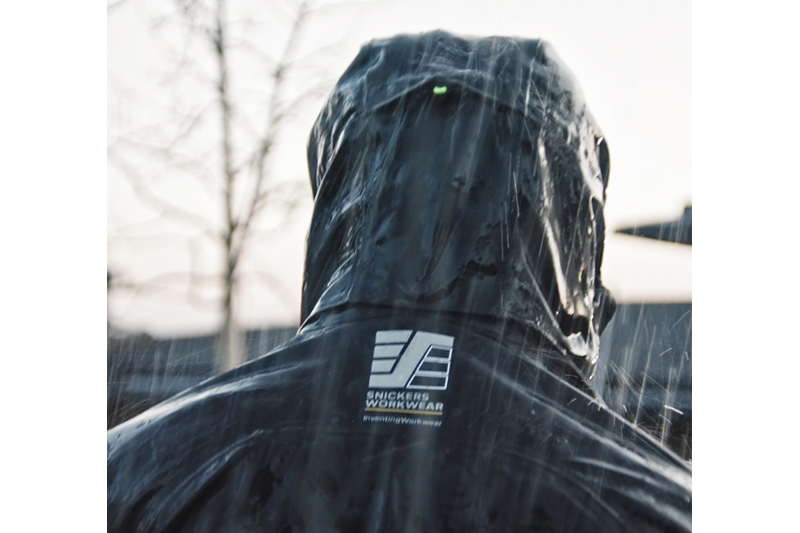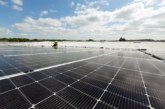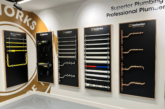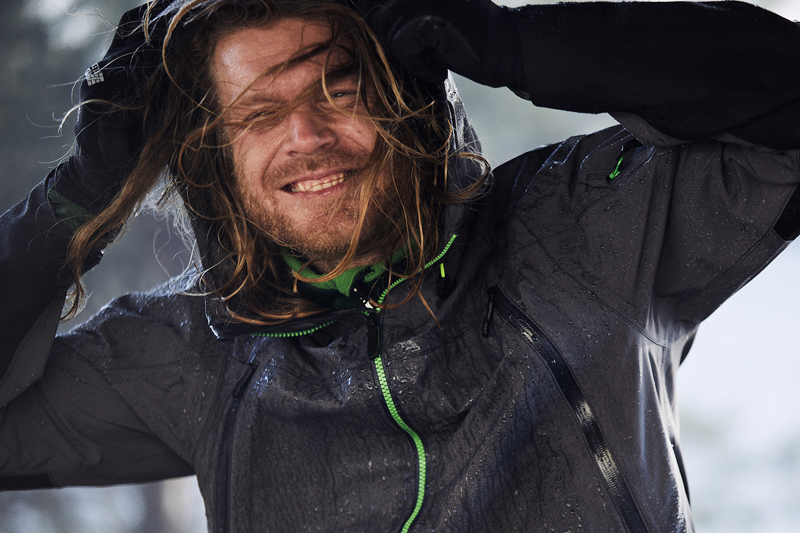
Whilst we are now emerging from the cold of winter, the Great British weather will likely offer no respite for those working out on site. PBM hears from Snickers Workwear about its latest weatherproof solutions which it says can help your customers navigate the worst of the spring showers.
If trade users haven’t got particularly effective rainwear, their mid-and base-layer clothes could get damp and uncomfortable which will affect the body’s own in-built climate control system. Apart from wet clothes getting heavy, it’s also possible that the wearer could get a rash from simple irritation through friction.
Their body can also lose heat — probably faster than it can be generated to dry the clothes out. That’s fine if your customers have been drenched by a sun shower when it’s warm, but if it’s cooler or even cold on site, their body temperature is going to drop.
Not only can stewing in wet clothes chafe and irritate the skin, if your customers are wearing damp or wet clothes for too long, bacteria and fungus from the air can multiply in the wet clothes environment and then run rampant on the skin.
Stay dry in the rain
It’s not a pretty picture, so staying dry and comfortable on site is all about choosing the right type of rainwear for the job. The choice your trade customers make depends on a variety of factors, from the type of rainfall to how intensely they are working and how many hours they spend outside — and whether or not the clothing they wear can to combine to create its own climate control system.
Here’s what to consider when recommending suitable gear for wet weather work:
- For 100% waterproofness for a full day’s high-intensity work, suggest a breathable waterproof garment with taped seams for maximum protection and breathability.
- For 100% waterproofness in low-intensity work in pouring rain, a PU garment with welded seams is to be recommended.
- For a basic protection against water, suggest a garment that is water-repellent. The garment will keep the user dry if it’s drizzling, but still offers breathability.
- Don’t forget that what is worn underneath the outer layer really matters — your customers need to think about Climate Control for the body.
- Also sustainability in the clothing is a major factor nowadays. Merchants can look to recommend clothes that have a reputation for longevity and are made from environmentally friendly fabrics to reduce waste and pollution.
For high-intensity work, your customers need to make sure their base-layer clothes are made of breathable fibres and fabrics that will keep them dry and ventilated by wicking moisture away from the body. A mid-layer fleece or gilet made from knitted or quilted materials will help to provide comfortable insulation by creating a pocket of air around the body. Then, it can be topped off with a third and final outer layer jacket to protect from the elements like rain, hail, snow, wind, or cold.
Layering working clothes properly will ensure that energy and performance levels are as weatherproofed as much as possible.
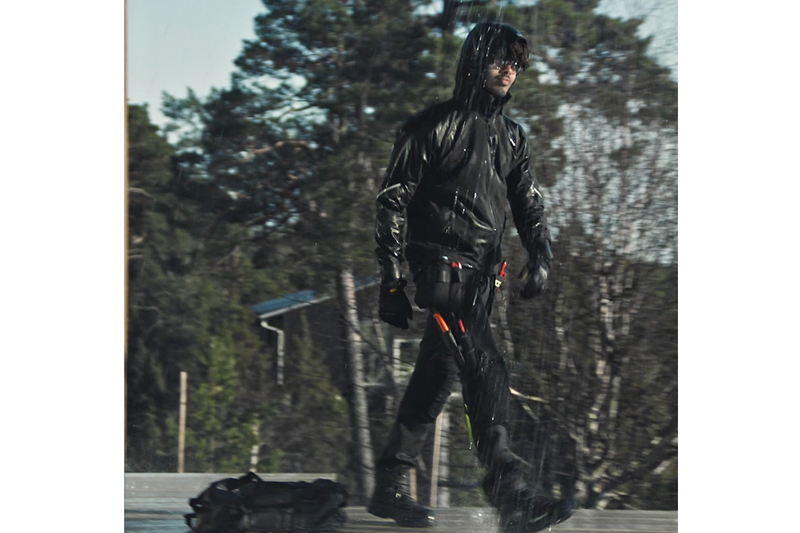
‘Waterproof’ vs ‘water-repellent’
When it comes to ‘water-protected’ workwear it’s important to know what’s behind each of the above terms as they are different. Peter Dumigan, Managing Director of Snickers parent firm the Hultafors Group UK, said: “A waterproof garment — like our GORE -TEX jackets — is the most effective 100% protection in rainy weather. This kind of waterproof fabric consists of an outer layer called the ‘face fabric’, usually made of polyester with a laminated membrane or a coating that prevents water penetration.”
It’s achieved by sealing the internal fabrics completely from external conditions. All seams and cut lines are taped or sealed to stop the water coming through the stitched areas of the fabric.
Water-repellent garments, meanwhile, only offer basic protection against the effects of water but at the same time can provide great breathability to ventilate your body when you’re active. Water-repellent protection is achieved by using a hydrophobic fabric, which means that the water is repelled on contact. The fabric is treated with a DWR (Durable Water Repellent) finish that causes the water to form drops on the surface of the fabric that run off or can be brushed off easily.
Making the choice
Your customers need to ask “just how wet are you likely to get on site?” Peter explains. “Their answer will help them choose the right type of rainwear to wear. What does the weather forecast say? Is there a risk of heavy rain, showers or drizzle? Will their work be low-intensity or more active?
“Finally, how long will you be exposed to the wet weather — minutes or hours? Hence, longer shifts will put more demands on your working clothes and the waterproof technology used in the garments. That’s why you need to consider whether you should be wearing waterproof or water-repellent clothing.
“So, for longer exposure or, if you need 100% protection on site in the rain, look for our GORE-TEX jackets. These highly technical garments are extremely durable with a membrane has over 1.4 billion pores per square cm. They’re waterproof to keep you dry, windproof to keep you warm, and breathable to keep you comfortable all day long.”
Peter continued: “For quick and reliable protection when it is raining, or if the work is less active, choose our PU garments which, along with our other rainwear clothing have EN 343 certification for Protection against Foul Weather. This accreditation validates the garment’s performance in the rain through independent testing.”
Ventilation is also vital. The clothes’ breathability is as crucial for comfort as the outer-layer protection against water, especially when users are working really hard. Clothes with good climate control will transport sweat away from the skin, and breathability comes in two ways — either the breathability of the fabric itself, such as Snickers’ 37.5 sports fabric, or built-in ventilation functionality such as zippers or meshed fabric areas at the sides and back of the garments.
Whatever the rain may do to dampen the spirits, as far as work clothes are concerned, getting the selection right means that your customers can work effectively and comfortably all day long.
Click here for further information on Snickers Workwear’s rain gear range.
A version if this article appeared in PBM’s March edition. Click here to read the full digital issue.
